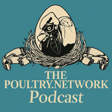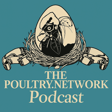
Ep. 15: Julian Sparrey, LiveTec – What Producers Should Expect from AI This Winter
The Poultry Network Podcast welcomes Julian “Jules” Sparrey, Group Technical Director at LiveTec, to unpack what producers should expect from avian influenza (AI) this winter and how to harden farm resilience.
LiveTec, prime contractor to government for AI outbreak response, now puts most of its effort into prevention — its “four Ps”: Prevention, Protection, Planning and Prediction.
Having worked on nearly 300 UK outbreaks in the past eight years, the team has learned first-hand what a confirmed case means for farms and businesses, and how to reduce the odds of it happening again.
Jules explains why this past summer raised eyebrows: unusually high numbers of detections despite heat that would typically knock back virus persistence in the environment.
The likely explanation is a maintained pool of virus within wild bird populations.
August also saw outbreaks linked to pheasants in the South West and reports of dead gulls on farms — reminders that under-reporting masks the true extent of viral pressure.
While LiveTec’s broad forecast suggests this season may be “heavy” (roughly two-thirds of the 2022–23 peak), timing and scale still hinge on weather and migration patterns through late October.
Expect a lag: wetter conditions can seed problems that only show several weeks later.
A standout segment covers LiveTec’s work with GPS-tag data from gulls. Though only a snapshot (c. 60–70 birds), it reveals daily UK–Netherlands movements, long ranging during certain months, and roosting behaviour around freshwater — all of which can “move” virus across landscapes.
Jules stresses: it’s less that virus is “blown on the wind” and more that birds travel with it, often following prevailing winds.
On resilience, the message is practical. Beyond “biosecurity fatigue,” focus on infrastructure: drainage and curtilage to prevent water ingress, roof and gutter maintenance, rigorous rodent control (especially during harvest and cultivations), and wild-bird exclusion.
Many UK sheds are ageing; refurbishment is surging, but design choices matter.
Build biosecurity in from the start: site layout, traffic routes, delivery/drop-off points and office access that minimise entries to clean areas.
The same measures help against salmonella — another reason to double down now.
For further reading and tools, the episode points listeners to EFSA’s biosecurity toolkit (multi-language infographics), Poultry.Network’s recent coverage of Gordon Hickman (Defra/APHA) on this winter’s risk, and a previous episode with Wayne Olbison (LANXESS) on the nuts-and-bolts of cleaning and turnaround.
LiveTec's own podcast (hosted by Jack Hughes) dives deeper into biosecurity, and its free mobile app lets users view outbreak and wild-bird data around their farms.
This winter, expect the unexpected, prepare for higher viral pressure than last year, and invest in the simple, site-level fixes that pay off when it counts.

